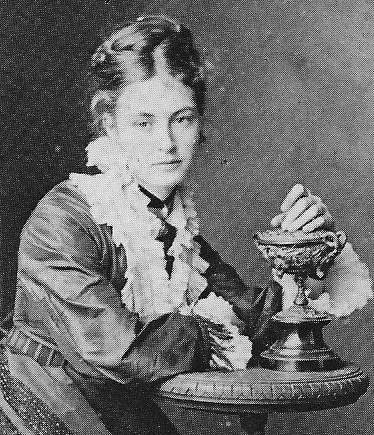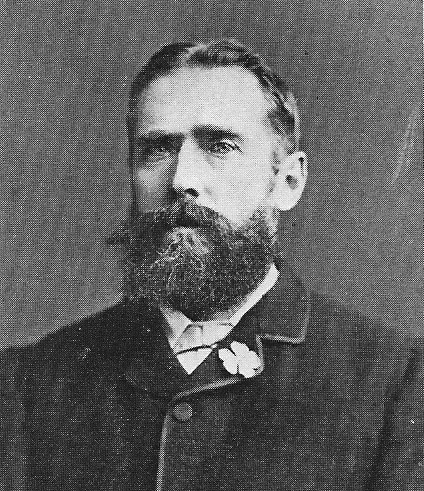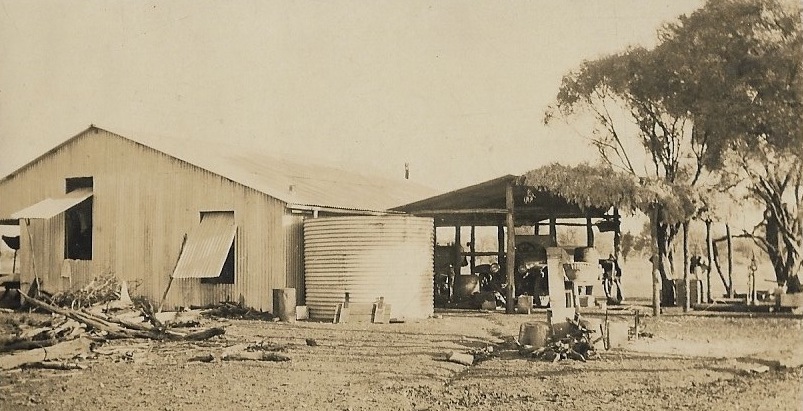William J. Beauchamp Cameron
(William was, as of about 1860, called Beauchamp*)
When 15 years old,
Beauchamp (decending from the Camerons of Lundavra)
arrived in Melbourne from Ireland in 1860 to join Uncle Dillon Cox,
who worked there as a livery stable keeper and horse dealer.
Dillon Cox left 1861 for Batavia (Dutch Indies) and Beauchamp followed him.
Beauchamp did not get along well with his uncle and decided to fend
for himself.
At some point he was camped with a droving outfit on the banks of the
Yarrah river, that was in flood.
Another drover, in a hurry, wanted to swim his horses across.
The horses got in trouble in the strong current,
remained milling around and were disoriented.
The owner offered 50 pounds for anyone getting the horses back or across.
|
|
Beauchamp took that advice. With another young lad he endeavoured to go into horse exporting. This was not always a success, and after one mishap he found himself pennyiless in Batavia (Dutch Indies).
In Batavia, around 1865, he landed a job at a blacksmith. One day, a lady in a carriage watched the replacement of a horseshoe,
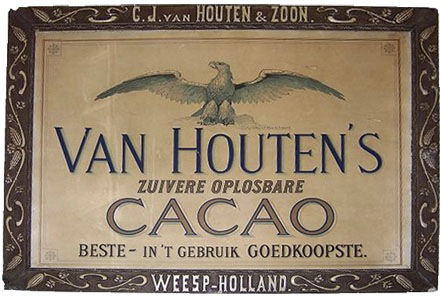
|
Beauchamp learned languages easily and he soon aquired Dutch and Malay. From the Malay he learned a lot about gardening. And in an honorary position, he functioned as interpreter at courts. He in particular helped inlanders. In the Van Houten firm, he was put in charge of the English side of the cacao business. Having a good job, he brought three of his brothers and two sisters to Batavia. Some drowned in a shipwreck, the sisters married there. But eventually Beauchamp got tired of Java and returned to Australia (MCR p.44-45).
Beauchamp returned to driving cattle. From The Wild Irishman, an event in 1872: A chance meeting with the young son of a distantly related Cameron family in the Barcaldine district led Beauchamp (then aged 27) to his future wife. He came upon eleven year old Willie Cameron (actually a 4th cousin), who had been sent on some errand with a horse and dray. The child's father had died only a few weeks before, the dray horse had wandered off during the night, and Willie was suffering a severe toothache, so was very distressed. Beauchamp located the missing horse and drove the little boy home, completing his kindly act by pulling out the offending tooth with a pair of stick pliers. While there, he was charmed by Willie's sixteen year old sister, Elizabeth Patricia. They fell deeply in love.
So Beauchamp had fallen in love
but first had to prove his worth to the head of Elizabeths family.
During the Australian gold rush (1874),
he recognised he could earn more by bringing cattle in the gold fields
and then act as butcher selling the meat to the miners.
In 1880, with his earned money,
and with James Tolson as partner (for 10 years), he bought
the cattle station "Uanda" (NW of what is now Barcaldine).
[In Tolsons obituary,
Beauchamp is, curiously, not mentioned.]
For place names see the map (adapted from Google).
|
|
Elizabeth Patricia (EP) Cameron
Elizabeth was born in 1855, daughter of a Scotsman who,
with little future in Scotland,
had endeavoured in 1852 to go farming in Australia.
With his son and two Crombie brothers (who became his sons in law)
he had set out in 1862 to good pasture north in an area named by them
the "Barcaldine Downs" after a Cameron family castle in Scotland.
Elizabeth stayed with her mother who, when her husband developed the farm up north, ran her own school. Two sisters of Elizabeth taught at that school
|
|
Elizabeth was the 4th in a family of then 7 children. Farm life was busy and at times hard. Elizabeth was a small woman but she stood her ground in difficult situations (MCR p.148). She carried first-aid equipment in her saddle bags, her father had done some medical training.
Beauchamp, with the farm Uanda, had practically become neighbour to the mentioned distant other branch of the Cameron family (with young Elizabeth) who ran the farm "Home Creek" in the Barcaldine Downs. Bea's brother John had been "head of the family" since their father's death (in 1872 as mentioned). John called Elizabeths suitor, Beauchamp, "The wild Irishman".
|
After 8 years of courtship (the long time partly because John was opposed to the relationship) Beauchamp could marry Elizabeth (EP) in 1881. The pair spent their honeymoon on Java where they surely also visited his sister Helen and brother Richard. There Beauchamp discovered to his dismay, that land he had bought during his years on Java had been "resumed" by the government of the Dutch Indies. This meant that he could not pay the marriage settlement until he, at some much later time, would have the funds. All reserves he had had gone into buying Uanda.
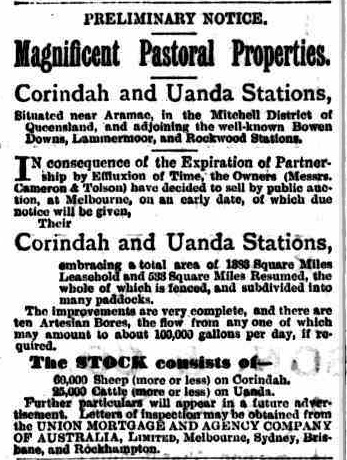
|
Returning to Australia, they brought with them from Java several Malays to find work on neighbouring properties as nursemaids and houseboys (MCR p.148).
So they farmed at Uanda (partner Tolson at Corindah).
Their first five children were born there.
In 1889, with lots of rain, there was a rat plague at Uanda (MCR p.65).
This brought hardship but all families in the area,
especially the Camerons and the Crombies, helped each other.
Because the partnership of Cameron and Tolson had expired
and Beauchamp wanted to get out, Uanda station was up for sale in 1890
(see the announcement in "The Queenslander" of 12 September 1890;
" Owners Messrs. Cameron & Tolson").
They now built a house in Toowoomba, on Curtis Street,
that was called "Lundavra"
(the name of his ancestral lands, but also EPs grandparents had lived
there).
The town of Toowoomba on the continental divide
had become the focal point of the Cameron family.
Children:
1882 Donald Charles (after his grandfather),
1883 Margaret Moore (after her grandmother),
1885 Allan Ewen, 1887 Kenneth Beauchamp,
1889 Ewen Colclough Beauchamp, 1891 Helen Patricia, 1893 Isabella Harriet,
1897 William Stephen Beauchamp (Billy).
All children wer born in Queensland, the first three in Greenhils
(Muttaburra), Bowen and Uanda (Muttabara),
the others in/near Toowoomba.
With many children, there unavoidably were rows.
APFB: When the boys would fight, EP would line them all up
and give them a spoon of "Castor oil".
Later, Ewen and Matty were boxers for a while, earning money at county shows.
After a little while, Beauchamp got restless. He needed action and the family was well settled in Toowoomba. He bought the farm "Magoura" in north Queensland, at the Gulf, some 600 km NW from his original farm Uanda and 1500 km away from Toowoomba. Each paddock was divided by an arm of the sea. Beauchamp liked the sea (he was an Irishman), unlike his in-law Camerons (who were Scottish highlanders).
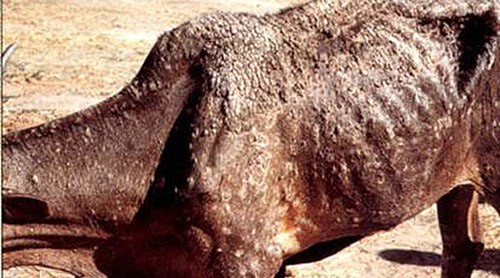
|

|
The children of Beauchamp and EP in 1894 at Lundavra in Toowoomba.
|
He took a job as a stoker on a ship to work his way back to Toowoomba (not wanting to borrow money), arriving nearly dead of fever. He still had to pay back the mortgage, but he still owned Lundavra. To earn money, Beauchamp took a job as "tick inspector", travelling up north. To his specifications, EP made a gauze tent with a duck top and floor for snakes and centipedes. It was light and portable. People up north admired it so much that he sent orders home for extra ones, and all family helped sewing with EPs "Wertheim lockstitch" (MCR p.91).
Once Beauchamp had financially somewhat recovered he decided to get
a farm yet further west, where the country was really dry.
This was again a risky undertaking.
He called the farm "Donalken" after the names of his three
eldest sons (Donald, Alan, Ewen).
He then considered to drill for water and was lucky, water came plentyful
and the farm had the prospects of becoming successful.
At this point brother in law John seems to have stepped in with two partners.
The partners wooed Beauchamp (getting him drunk) into selling the farm,
with a gain, and although Beauchamp regretted this the next morning,
he was a man of "a word is a word".
So he moved out and returned to Toowoomba.
In this way, John saved his sister EP and Beauchamp
from perhaps another financial desaster (MCR p.96-97).
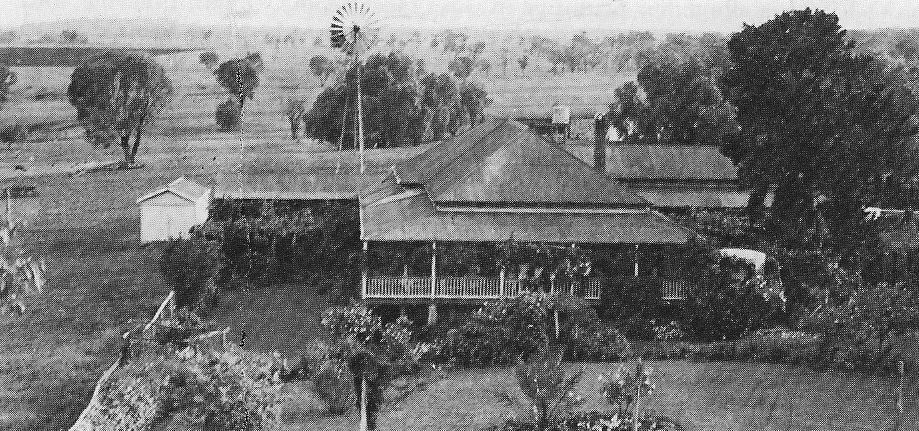
|
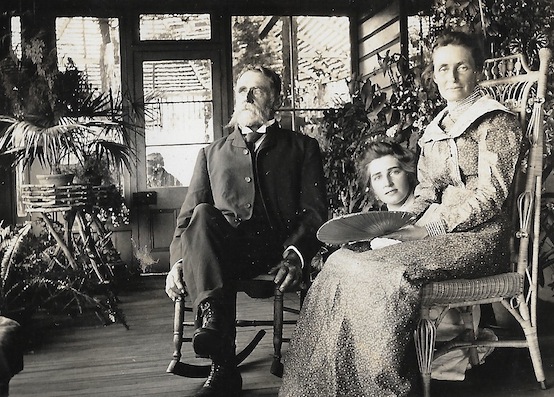
|
|
Left: The farm Aughamore, ca. 1896 (from MCP p.108). Right: Beauchamp, Elizabeth (EP) and daughter Meta in Fairholme, the house of EP's mother in Toowoomba, ca. 1903 (from pAJnS). | |
Beauchamp and EP settled in the late 1890s on a farm just 30 km west of Toowoomba, Queensland.
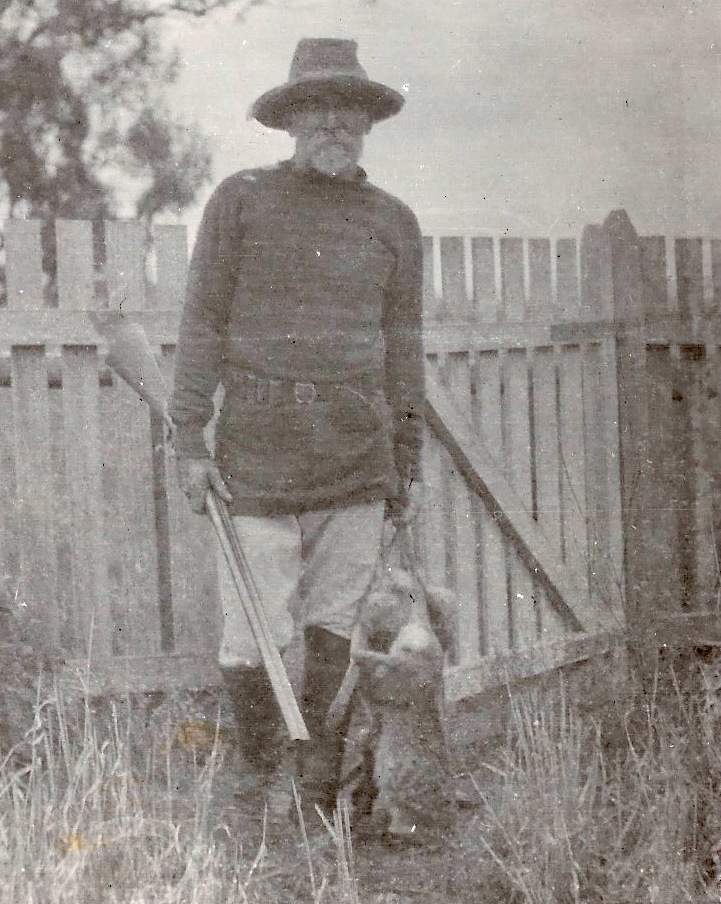
|
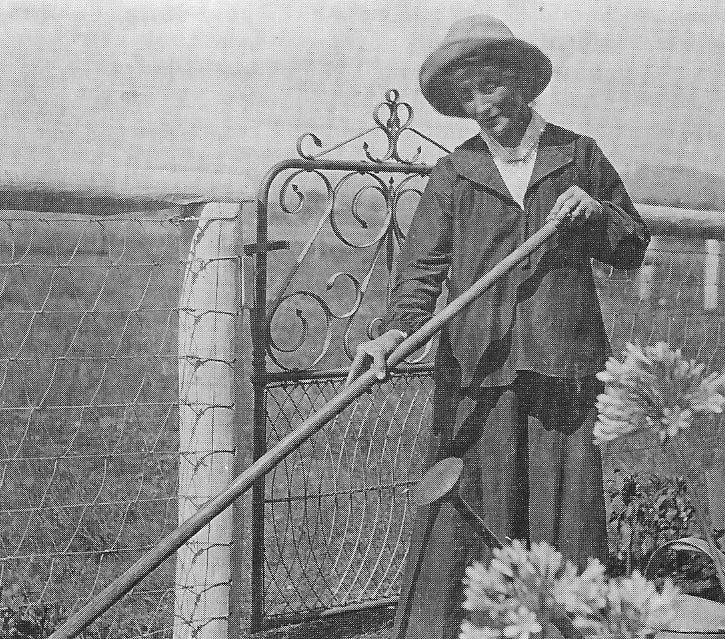
|
|
Aughamore: Beauchamp comes home with 2 hares for the pot (from pAJnS), Elizabeth in the garden (MCR p.112). | |
APFB: Beauchamp loved race horses. He called one "Pardon", another "Reprieve".
|
|
In 1928, Beauchamp had a stroke.
His grandson Justin Beauchamp (Foster Barham), father of APFB,
who later lived in Nelson, NZ, looked after him.
APFB: Justin had to undress his grandfather,
shower him, and put on clean clothes.
EP and the daughters Helen and Isobel would have a pack of provisions
ready for him to go back to his hut in Quilpie.
Beauchamp was much happier this way than being cooped up in
an old-peoples home.
Beauchamp died there (Quilpie), in 1928,
and was buried at his favourite spot.
The grave stone was later erected by sons Billy and Matey Cameron.
APFB:
His shotgun was inherited by grandson Justin;
it was put to good use in rabbit shooting during the depression.
It is still in the family.
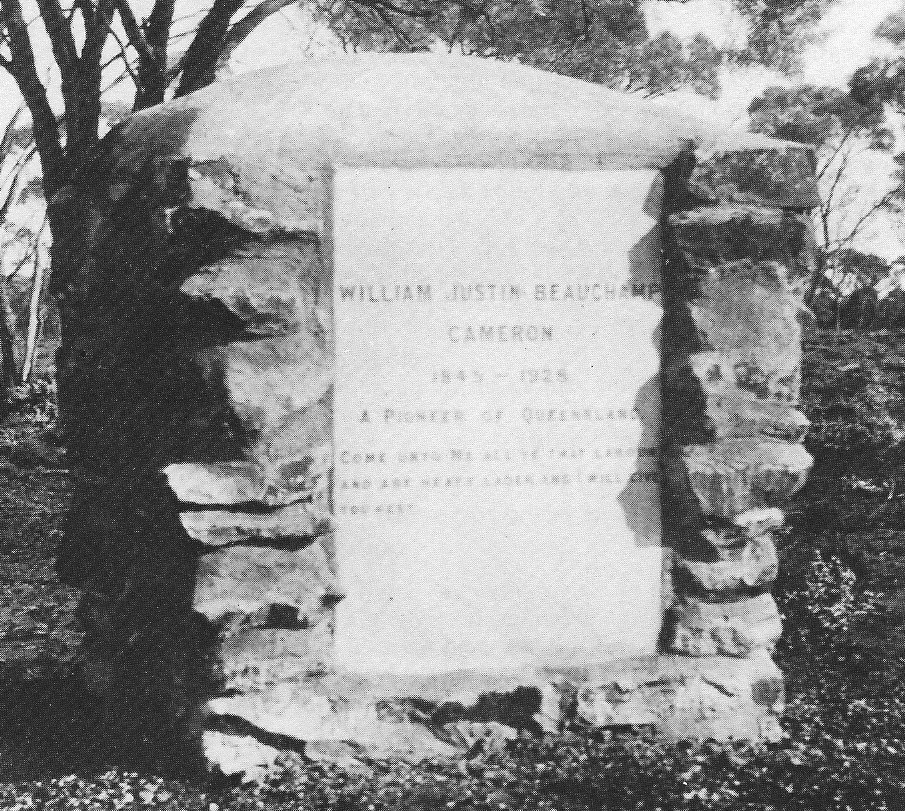
|
On Beauchamp, from "The Wild Irishman": Beauchamp was apparently an impulsive, quick-tempered, sometimes stubborn man, but a hard-working and completely honest one. He had been brought up in the old gentleman's code of honour, and lived by it all his life. He believed that a given word and a handshake were all that was needed between decent men, and saw no need for legal documents. When he died, six sovereigns he had found many years before were still lying in his desk awaiting a claimant.
EP returned to Toowoomba. She died there in 1951, aged 96. She is buried in the Drayton and Toowoomba cemetery.
MCR, rembering her grandma and grand aunt writes (p.75): EP and her sister Adele "dressed in the fashion of a bygone era. Both were widows, and wore rustling, ground-length black silk gowns, buttoned high to the neck with tiny black buttons, and finished with delicate little collars of creamy hand-made lace, stiffened with slivers of whalebone. Their hats were black toques, with black lace veils just long enough to cover the face."
All children stayed in Australia, except for Margaret (Meta). Margaret met in Toowoomba the waterworks engineer Hugh G. Foster Barham, whom she married, and with whom she moved over the world (following his jobs) to finally live in Nelson, New Zealand.
In Toowoomba the house built in 1889 by Beauchamp still stands, at 2 Curtis Street (next to the showgrounds).
To enlarged photos.
Back to the genealogy of WJBC and EPC.
*) Beauchamp is pronounced as "beach-am";
the name is originally french: "beau-champ", meaning good pasture.
APFB:
Helen Aroha Pasley née Foster Barham provided information in
letters to KSdB of 15 March and 5 April 2016 as well as 4 March 2017.
pAJnS = photo archive Aprilla Jacometti,
great-granddaughter of Beachamp and Bea.
MCR: Most of the "stories" were taken from
"A Strange Bird on the Lagoon" by Margaret Reeves
née Cameron, great-granddaughter of WJBC and EPC
(1985, Boolarong Publications; ISBN 0908175 957).
Photos from MCR have been reproduced with permission
of the Cameron descendants.
The essay "The Wild Irishman"
was written by Marie Cameron in Toowoomba.
